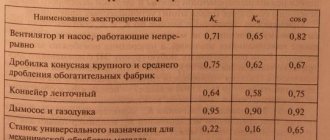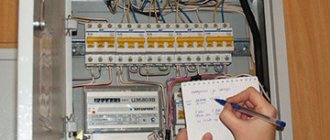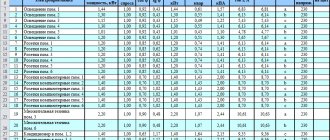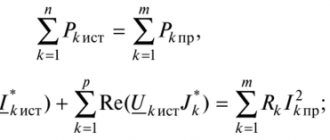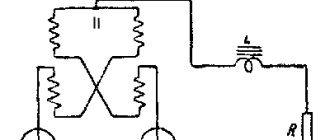What is fire load
This is a quantitative characteristic that shows the probable intensity of combustion and its duration.
By definition, fire load (FL) is the value of the amount of heat emitted or capable of being released into the atmosphere due to the complete combustion of substances, objects, materials located in the flame zone.
When considering the relative value, calculated as PN divided by a unit area, expressed in meters, we talk about the specific fire load (Pud), which has the dimension of megajoule divided by m2, and determines which explosion and fire category a particular room belongs to:
- B4 – Prude from 1 to 180 MJ/m2;
- B3 – Ore within the range of 181–1,400 MJ/m2;
- B2 – Prude from 1,401 to 2,200 MJ/m2;
- B1 – Ore over 2,200 MJ/m2.
In spaces marked B1-B4, the presence of several areas with the specified specific fire load is allowed. If a segment appears with an excess of the parameter Psp relative to the others, the room is assigned an increased hazard code, which corresponds to the maximum value of the specific fire load.
How to determine what the allocated electricity capacity is in your home?
There are several ways to determine the exact allocated power that a private house or summer cottage has.
1) View the rating of the input machine
The easiest way to determine the allocated power of electricity to a house is by the value of the operating current for which the input circuit breaker installed in the electrical panel is designed. To do this you will need to perform a simple calculation. For example, on the body of the input machine the operating current is indicated as 32 A. It is necessary to use the following formula: P max = U x I, where:
- U – rated mains voltage (220 or 230 V – will depend on what mains voltage is supplied to the house);
- I – indicator of the operating current of the input circuit breaker in amperes.
The problem with this method is that the rating of the input machine does not always coincide with the official allocated power.
For example, this occurs when an external line has been upgraded with an increase in its power, and also if the electrical wiring has not been changed for a long time or its installation was performed poorly.
If the allocated power of electricity significantly exceeds the capabilities of the input circuit breaker, then it would be advisable to replace it and bring all electrical wiring in the house into compliance.
2) Contact the operating organization
The allocated power per home can also be found in the electricity supply contract. If it is missing, then you must contact the operating organization, which must issue a certificate of actual power consumption and installed power. In Moscow and the Moscow region, this is done by Mosenergosbyt OJSC. The company provides the service for a fee, its cost is on average 2 thousand rubles.
If a private house is serviced by a management company, then it is the company that is obliged to issue the owner a certificate of allocated power or permission to connect to the house’s electrical networks and an act of delimitation of balance sheet ownership and operational responsibility.
In SNT, the data on allocated power for each site is owned by the chairman of the partnership, who must inform its users about this.
3) Study the energy supply agreement
You can find out the allocated power in the contract for power supply of an individual residential building (household) between Mosenergosbyt OJSC and the owner. Information about this is usually indicated in the “Subject of the Agreement” section with the following wording: the maximum power of a household is determined based on the parameters of the technological connection of the subscriber’s power receiving devices to electrical networks and is 5 kW.
Classification
Fire load designation.
Depending on the various indicators of the materials used or placed inside or outside the building, their characteristics, the concept of fire load is further systematized.
Permanent and temporary
The materials from which the structure is constructed, supporting structures, floors, built-in equipment, surface finishes and other non-movable parts of the building constitute a constant fire load.
Replaceable items: papers, finished products, furniture, stands, shields - in general, everything that can be dismantled and removed from the building, even if their weight is several tons, are called temporary PN.
To calculate the specific fire load of a room, the temporary and permanent components are summed up.
By properties and parameters
Classification is also made according to the physical and chemical characteristics of materials and substances, these include:
- The rate of fire spread. Described by the amount of time it takes to obtain one megawatt of power:
- 75 sec. – ultra-fast;
- 150 sec. – fast;
- 300 sec. – average;
- 600 sec. – slow.
- The ability to generate smoke is determined by optical density:
- over 500 m2/kg – high;
- 50–500 m2/kg – moderate;
- up to 50 m2/kg – small.
- Density. Standard values are within the range of 300–2,000 MJ/m2.
- Toxicity. It is determined by comparing the amount of gases released during a fire with the harmfulness indicator given as the ratio of the density of toxic suspensions in the atmosphere to the maximum permissible concentration of the substance in the air.
What is allocated electrical power?
The allocated power (or permitted power) is the maximum permissible one-time load in kW on the consumer's network (apartment, private house or cottage), which cannot be exceeded.
The rules for connecting private houses and apartments to the electrical network are set out in SP 31-110-2003 “Design and installation of electrical installations of residential and public buildings” and RM-2696-01 “Temporary instructions for calculating electrical loads of residential buildings.” According to these documents, each apartment or private house should be allocated from 5 to 7 kW if a gas stove is installed, and from 8 to 11 kW with an electric stove installed. In addition, the allocated power must be specified in the electricity supply contract.
For comparison, during the Soviet era in apartments, as a rule, the established electricity rate was only 1.5-3 kW, but the increase in the number of household electrical appliances and their power consumption gradually required an increase in this parameter.
Private houses and dachas located in horticultural, gardening and dacha non-profit partnerships, as a rule, are allocated electricity within the limits of the connected power specified in the technological connection act, which is no more than 15 kW in a three-phase network (5 kW for each phase) or no more than 5.5 kW in a single-phase network. This norm is established by Decree of the Government of the Russian Federation No. 334 “On introducing amendments to certain acts of the Government of the Russian Federation on improving the procedure for technological connection of consumers to electric networks.”
Size for different types of premises
In buildings, the fire load depends on density and is determined separately for each floor, taking into account the purpose of the space.
Table of specific fire load of materials for premises of various uses.
| Purpose | Permissible fire load value |
| Administrative, domestic, office space | 50 kg/m2 |
| Apartment, number of rooms 1 2 3 | 27 kg/m2 30 kg/m2 40 kg/m2 |
| Structure, fire resistance degree III | 100 kg/m2 |
| Workshop at an enterprise | 500 kg/m2 |
| Drying chambers, warehouses | 1,500 kg/m2 |
| Petroleum products processing workshops | 3,000 kg/m2 |
| Warehouse complexes with high-level storage on racks | 3,000 kg/m2 |
The calculation of PN is made taking into account the density of placement of raw materials and materials. The location on the floor, racks, and pallets is taken into account.
GOST 12.1.004-91 establishes the mandatory classification of objects by fire hazard, taking into account PN.
Typical cable size selection
In accordance with the cable cross-section, automatic switches are used. The classic version of the wire cross-section is most often used:
- For lighting circuits with a cross section of 1.5 mm 2;
- For socket circuits with a cross section of 2.5 mm 2 ;
- For electric stoves, air conditioners, water heaters - 4 mm 2;
To bring power into the apartment, a 10 mm 2 cable is used, although in most cases 6 mm 2 is sufficient. But a cross section of 10 mm 2 is selected with a reserve, so to speak, with the expectation of a larger number of electrical appliances. Also, a general RCD with a shutdown current of 300 mA is installed at the input - its purpose is fire protection, since the shutdown current is too high to protect a person or animal.
To protect people and animals, an RCD with a shutdown current of 10 mA or 30 mA is used directly in potentially unsafe rooms, such as a kitchen, bathroom, and sometimes room groups of sockets. The lighting network, as a rule, is not supplied with an RCD.
Fire load calculation
Performed in accordance with SP 12.13130.2009 (Code of Rules).
Purpose
Fire hazard classification.
Produced for the classification of structures (B1-B4), outdoor installations, used to determine the principles of fire safety organization.
Additionally used in calculations:
- the period from the start of the fire to the blocking of evacuation routes;
- thermal influence on structures during the design of structures;
- fire safety of building elements;
- period of fire spread to nearby areas;
- parameters of smoke removal systems, signal circuits, fire extinguishing equipment;
- resources of rescuers when extinguishing a fire;
- for registration of fire declarations;
- amounts of insurance payments.
Formulas
Expression for calculating the PN of homogeneous matter:
where M is the mass of the substance, and Q is the minimum value of the heat of combustion.
But it is difficult to imagine a space consisting entirely of one substance.
Therefore, for rooms where a large number of substances and materials are located in different states, the formula is used to calculate the fire load:
that is, the total PN is the sum of Pmat for each component in the room.
In order to classify a room into any fire hazard category (B1-B4), the specific fire load figure is taken as a basis.
It is calculated by the formula:
where S is the area where materials are placed. It should be noted that this value is calculated based on the projection of all levels onto the floor.
Example. The goods are placed on a high-ceiling warehouse rack. There are 10 levels in total. Shelf length 1 m, width 5 m. What category does the room belong to if the combustible load is 5,000 MJ.
Since the shelves are located one above the other, we take a rectangle of 1 * 5 = 5 m2 as the projection. We divide 5,000 MJ by 5 m2 and get a specific load equal to 1,000 MJ/m2. The warehouse belongs to fire hazard category B3.
Calculations.
It is impossible to calculate the area of each loaded shelf regardless of its height; the result will be an incorrectly underestimated result.
In our example, with this calculation, the load will be 100 MJ/m2, and the room will fall into category B4.
That is, in conditions of greater actual danger, the quantitative indicator is less, and accordingly, food safety measures will be planned and carried out in insufficient quantities. The price of such a mistake can be human casualties and serious material losses.
Demand Coefficient Method
The basic calculation formula is: Рр= Кс•Руст ; Qр = Рр×tgφ,
To find the design load of a group of consumers homogeneous in operating mode, use the following expression:
Pp = Kс ×Рн;
Qp = Рp×tgj,
where Kс and tgj are the demand coefficient of the receiver group.
To find the design load of one of the sections of the object or the object itself as a whole, it is necessary to add up the coefficients of different times of load maximums and the design loads of individual groups of receivers.
Calculation using the demand coefficient method has its disadvantages. The main thing is that for all consumers the value of the demand coefficient is assumed to be the same. However, it is assumed to be the same for the optimal number of subscribers.
The demand method is usually used in situations where there is no specific data about the subscriber.
Power load calculation:
Pp = Pmax = Kc* Pset = 0.3 * 16130 = 4839 kW
Qp = tgф * Pp = 0.88 * 4839 = 4258.3 kvar
In addition, it is necessary to take into account the load of artificial lighting in workshops and the plant area.
Below you can use the online calculator to calculate the cost of designing power supply networks:

